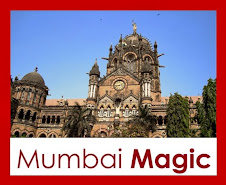- By Deepa Krishnan
One of the nicest things about living in India is how you can get something custom-made so easily. Today I set out to repair a broken green necklace, and to create a new piece of red coral jewellery for myself.
This green necklace is one of my old favourites...but has been sitting inside my jewellery box for a while now because it broke while we were on a TV shoot.

Mercifully, I didn't lose too many of the beads. So I put all the broken bits away in a little box, waiting for the day when I would have some spare time.
Today, I finally found the time, and took the box to my local street-side jeweller, Mr. Raju Patwa.

The Patwas are a traditional group of craftsmen who work with beads. Although this man had not seen the original necklace - all I gave him were loose beads - he took one look at it and created something just as attractive as my old one. I sat on a little stool next to him, and watched him deftly put it together. At the end of 15 minutes, I had my necklace back, and a big smile on my face! The cost? Thirty rupees. I was very pleased because I used to wear this necklace very often, and I missed not having it.
My next project was more ambitious. I have this really lovely coral pendant set in silver. It used to be strung on a single red leather thong, but the thong broke. So I was stuck with the pendant, not knowing what to do with it.

This time, I wanted to string it on something slightly chunky looking. So Mr. Patwa and I spent 15 minutes looking at different beads and arranging / setting them in different combinations. After examining red, green, and silver beads, and tsking and tut-tutting our way through many wrong combinations :) we finally hit upon the idea of using tiny black beads, interspersed with asymmetric long coral beads.
Once we had agreed upon the basic idea, I left Mr. Patwa to think up the actual creative bit of how to make the idea come alive. I was to come back after an hour, to see what he had done, and then we'd figure out any further changes.
With an hour to kill, I wandered through the market with my mom and sis. We went to a specialty food store, stocked up on some favourite treats, bought fruits and vegetables, ate rawa dosa and had mosambi juice...and by the time I came back, there was a half-finished necklace waiting to be tried.

So then we went to the final stage: I tried it, we added some beads, removed some others, modified the length so it would be just right for me...and finally, I took it home. It had taken totally 1.5 hrs to get this necklace done. I paid Rs 300 for the coral, black beads, design and labour and thought it was well worth it to have something so personalised.
And then...(sigh)...the pleasure of wearing it (and knowing no one else has one just like it!).

My sis saw the necklace and said, I want to design one too! She has just today bought a silver pendant and ear-rings from SIA (where there is a massive sale going on), and we're going to make an expedition to Bhuleshwar to buy beads. Then we'll come back to Mr. Patwa to figure something out for her. I'm looking forward to the next creative session!









